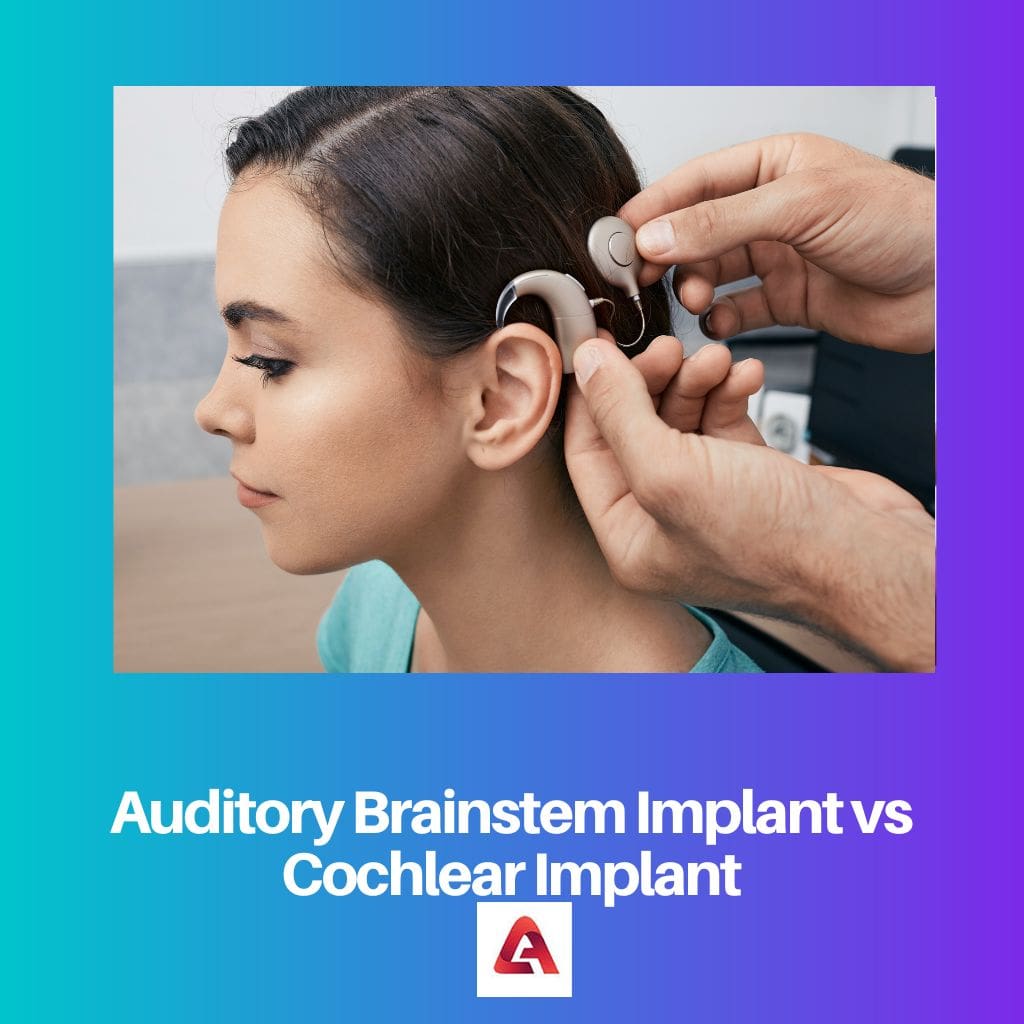Key Takeaways
- Auditory Brainstem Implants (ABI) stimulate the auditory nerves directly at the brainstem, bypassing the cochlea and auditory nerve.
- Cochlear Implants (CI) stimulate the auditory nerve within the cochlea, converting sound waves into electrical signals.
- ABIs are used for patients with non-functioning auditory nerves, while CIs are suitable for those with damaged hair cells in the cochlea.

What is an Auditory Brainstem Implant?
The auditory brainstem implant is a device that Is designed for those who have severe or intense sensorineural hearing loss. It is Implanted in the brainstem of the affected person. When the cochlea or the auditory nerve gets damaged, a person gets affected, and this makes the effectiveness of hearing aids impractical.
The damaged cochlea and the auditory nerve are bypassed in the working of the auditory brainstem process. It directly stimulates the brainstem. It has an external speech processor and internal receiver-stimulator; the external processor is fixed behind the ear while the internal receiver-stimulator is lodged in the brainstem.
An internal stimulator produces electric signals conveyed to the brainstem and are expounded as sound. A highly experienced and proficient team is required for this multiplex procedure. Usually, doctors recommend it to those with no other option for re-imposing their hearing. After having this, a person’s ability to communicate and link with the world is greatly improved.
What is a Cochlear Implant?
A cochlear implant is a medical appliance used for those who are deaf or have difficulty hearing. Through surgery, this is lodged into the ear, which enables a person to hear sounds out of earshot. This device also bypasses the injured or malfunctioning parts of the ear. It has a microphone, speech processor, and inner electrode implanted into the cochlea.
This device works by catching sounds with the microphone and transforming them into electric signals received by the speech processor. The speech processor scans the signals and transfers them to the brain. With this device, a person can hear sounds effectively and interact with the world, even with severe hearing loss.
The cochlear implant is complex and involves an ear, nose, and throat surgeon, an audiologist, and a speech therapist. Implantation is carried out through a surgical procedure, and the patient also requires rehabilitation later. The quality of life who have received this Implant has been improved.

Difference Between Auditory Brainstem Implant and Cochlear Implant
- An auditory brainstem implant is surgically installed in the brainstem, whereas a cochlear implant is surgically installed in the inner ear.
- An auditory brainstem implant stimulates the brainstem, whereas a cochlear implant is concerned with stimulating the auditory nerve.
- An auditory brainstem implant is for those whose auditory nerve is damaged, whereas a cochlear implant is for those whose hair cells are damaged in the inner ear.
- Auditory brainstem implants provide a good sense of sound, whereas a cochlear implant provides a better sense of sound.
- An auditory brainstem implant is recommended for those with severe sensorineural hearing loss, whereas a cochlear implant is for moderate sensorineural hearing loss.
Comparison Between Auditory Brainstem Implant and Cochlear Implant
| Parameters of Comparison | Auditory Brainstem Implant | Cochlear Implant |
| Implantation Site | Brainstem | Inner of Ear |
| Working | Stimulating the Brainstem | Stimulating the Auditory Nerve |
| Damage | Auditory Nerve | Hair Cells in the Inner Ear |
| Sound | Good | Better |
| Patient Suitability | Severe Sensorineural Damage | Moderate Sensorineural Damage |



